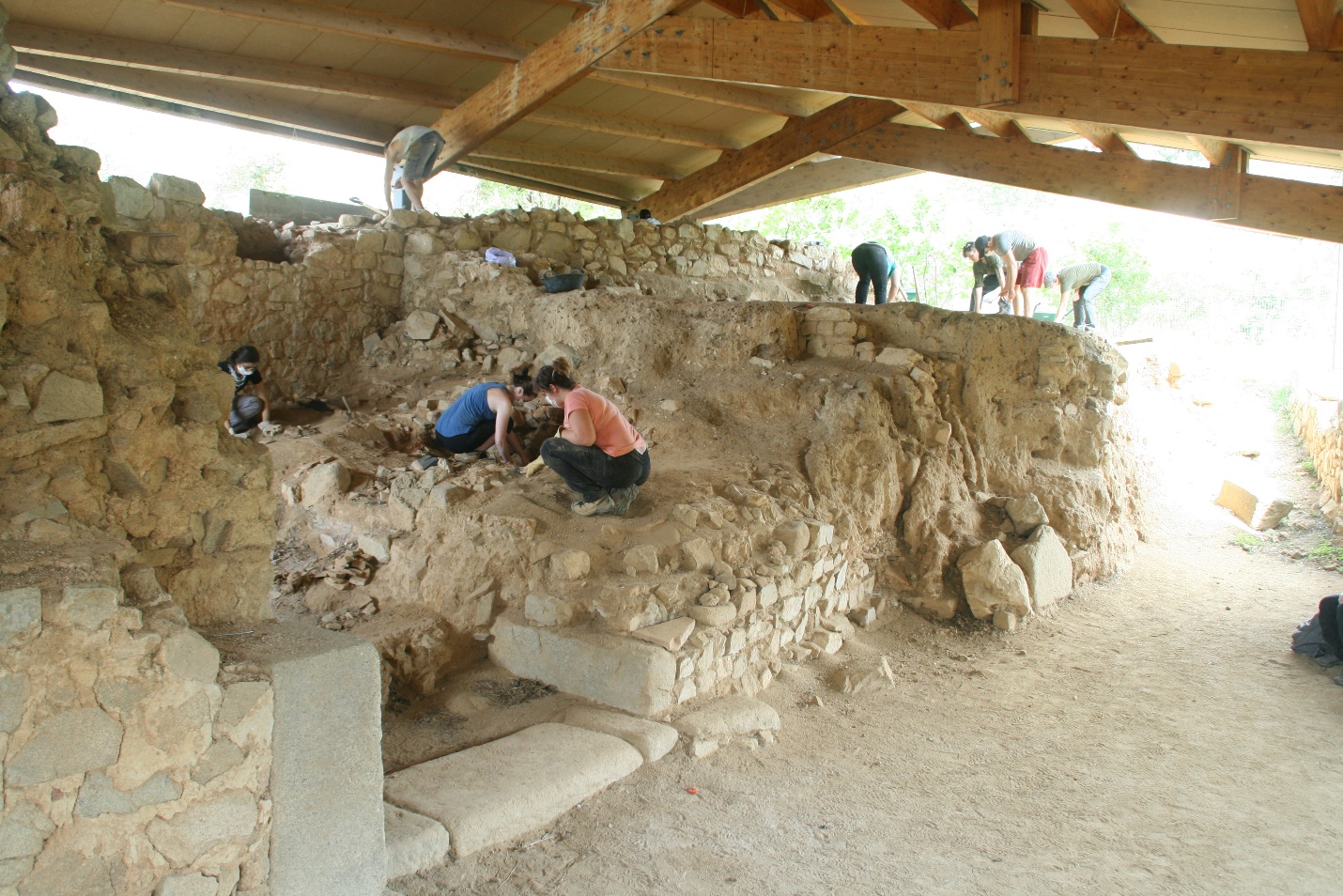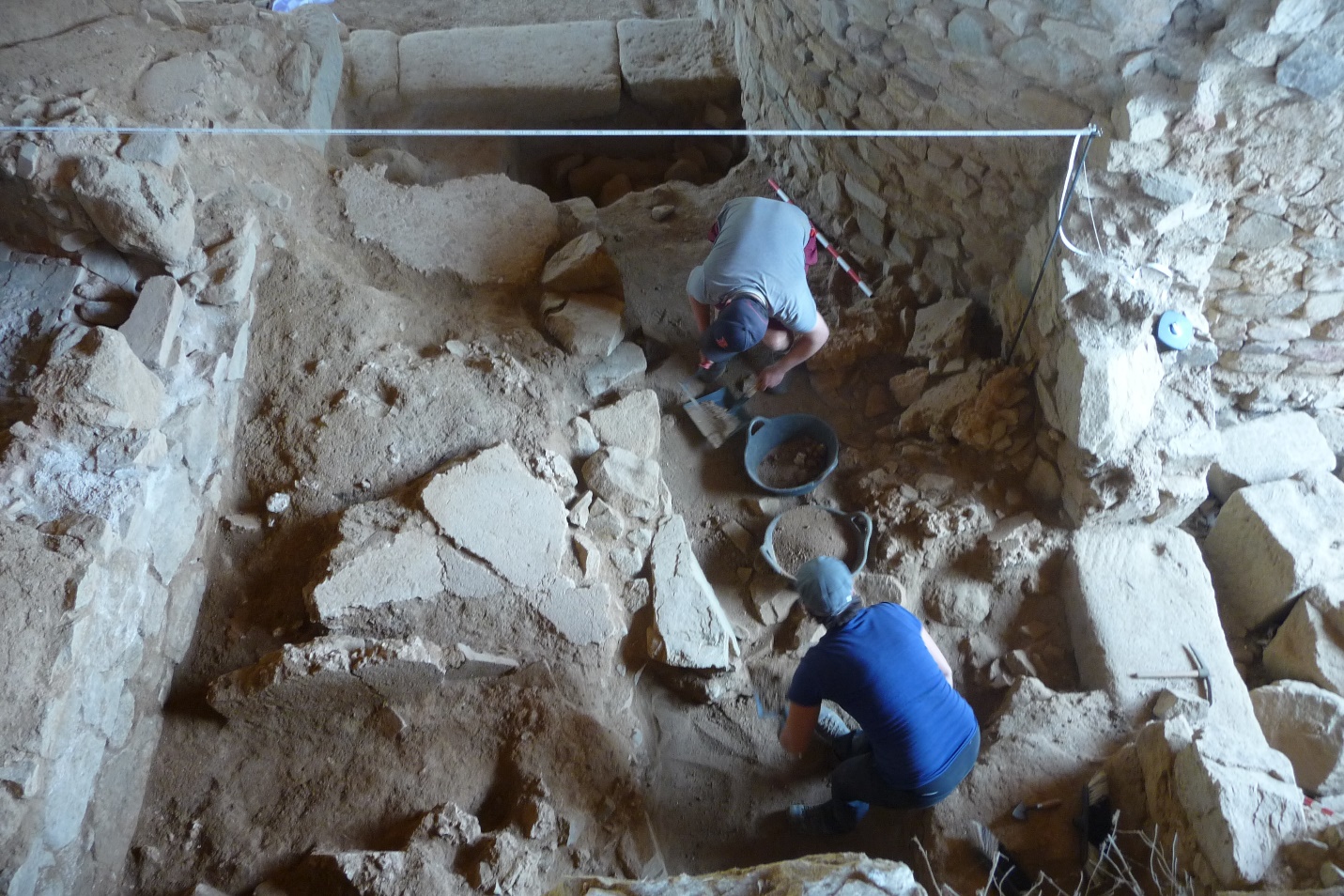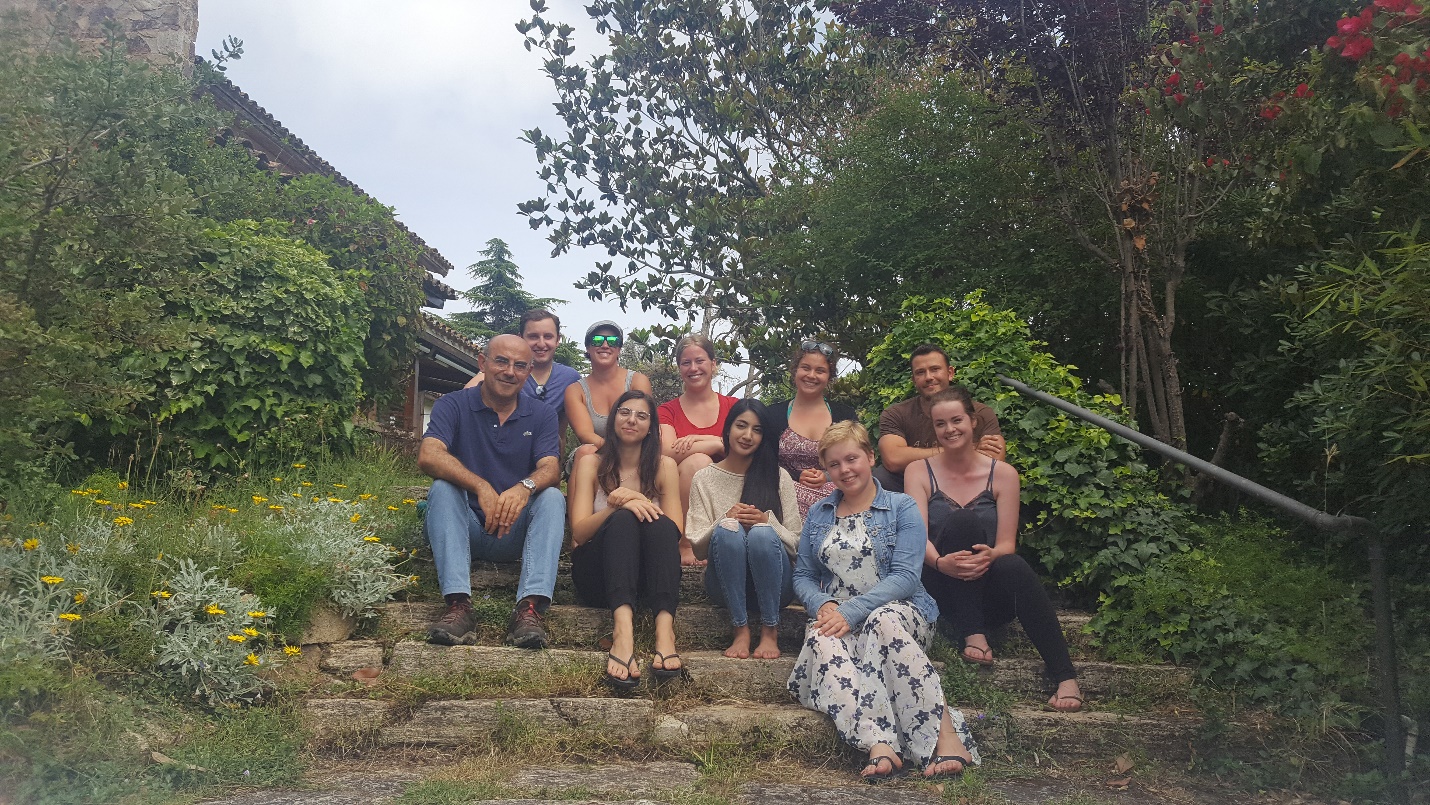Can Modolell
OBJECTIVES
The general objectives of the 2017 excavation campaign were of two types. On the one hand, it was intended to document the state of conservation of the architectural structures, thinking of future interventions for global preservation; On the other hand, the evaluation of the possibility of excavating specific sectors was intended in order to develop a research project to study and interpret the archaeological site, and to define and explain its exact nature.
With the above in mind, three specific goals were proposed for this campaign:
- A general cleaning of the architectural structures, in some cases where it has become very degraded by the action of atmospheric agents. This is the case of the constructions located to the East, where elements of different phases are superimposed (from the 1st to the 6th c. AD). The cleaning sought to define the preservation of the various structural elements, and to evaluate their condition now versus when they were identified in the 1999 preservation excavation. One of these structures was a large kiln.
- The cleaning of areas where stratigraphy is preserved; in particular the North and Western sectors of the archaeological complex. The excavations carried out in 1999 has allowed us to identify both medieval and modern structures here and, above all, a well-preserved stratigraphic sequence, with a thickness of about two meters. This well-preserved archaeological sequence seems to include phases from the founding moment until the 5-6th c. AD. Most likely, this is the sector where the architectural evolution and the occupational sequence of the entire site can be better followed.
- Graphic and photographic documentation of all architectural structures. The purpose is to verify the current situation with the documentation recorded in 1999; In addition, this documentation will be transferred to Autocad. These tasks have the complementary goal of familiarizing students with documentation practices in a scientific excavation, as well as to introduce them into the application of new technologies (such as 3D modelling and photogrammetry) to be used towards the study and documentation of archaeological remains.
RESULTS
The excavation has allowed us to achieve some of the aforementioned objectives; though some of them are strictly of scientific nature, and some are related to the future management of the site. In general, the new data confirms the results which were obtained in the 1999 campaign, though it significantly modifies and adds some new information.
In the first place, it has been possible to confirm the archaeological potential of the site. The cleaning of the whole north-western sector has made it possible to date some of the constructions, placing them on a chronological horizon in the Late Roman period. At the same time, the excavation of the kiln discovered in 1999 has led to the modification of both its chronology and function.

Our team has better defined the phase belonging to the of Late Roman period (5-6th c. AD), which seems to present several structures of a certain importance that indicate a stable occupation which includes some basic infrastructures for domestic life such the kiln. It has also been confirmed that the stratigraphic sequence for this phase is well preserved and will allow us to complete (after excavation) the data obtained during the archaeological campaigns conducted in 1974-1984. What is particularly interesting is to understand the late-Roman occupation, with possible reforms, and its abandonment.
The 2017 archaeological campaign has also made possible to verify that the Late Roman phase has preserved the underlying stratigraphic sequence of the High Empire in some areas. In the future, we believe that it will be possible to define the various sub-phases within this period, in which the large-scale architectural reforms apparently took place in the so-called "criptoporticus" sector.
This fact is important since these reforms have never been accurately dated. On the other hand, a future excavation will also allow the reconstruction of the internal organization and function of the construction or constructions that occupied the western zone of the complex; in particular, its internal rooms and their relationship with the open spaces. The recovery of the material collapsed from an upper floor can also provide information on how this structure should have been, perhaps clarifying its relation to the semicircular construction that, in turn, corresponds to an important reform of the first original building dated on II century AD. Given the degree of conservation of this stratigraphic sequence, "sealed" under medieval and modern strata, the western building becomes the key to reconstructing the history of the place and its function.

Additionally, the 2017 archaeological campaign has allowed our team to clearly identify a sequence of occupations that go beyond the Roman period. In particular, two main moments: one superimposed directly on the Late Roman constructions (with a possible medieval dating), and another (possibly modern-contemporary; XVI-XVIII centuries?) that takes place after the abandonment. One of the lines of future action will be precisely trying to obtain data to place these two phases in an absolute chronology.
In sum, the 2017 excavation campaign has allowed us to resolve important doubts and raise future archaeological lines of action in relation to the objectives associated with the excavation of Can Modolell. First, as a specific objective, we must reconstruct the architecture and function of the site and define its evolution throughout the imperial era. From this analysis, it will be possible to characterize this site in relation to other architectural-functional structures belonging to the rural world both in Catalonia, and in the rest of the Iberian Peninsula. In particular, in relation to other places with a possible cult function.
Secondly, as a general objective, the well-preserved stratigraphic sequence documented in Can Modolell must contribute to improve our knowledge of Roman religious manifestations in rural areas and the relations with the nearby towns. This knowledge must be later integrated into the broader context of the analysis of the forms of organization of rural society in the Roman West; In particular, its mechanisms of communication, interaction and identity.
EXCAVATION TEAM
This fantastic work and excellent results were possible thanks to the hard work of our students and volunteers. In 2017 the excavation team at Can Modolell included students from UVic, York University and University of Barcelona.

